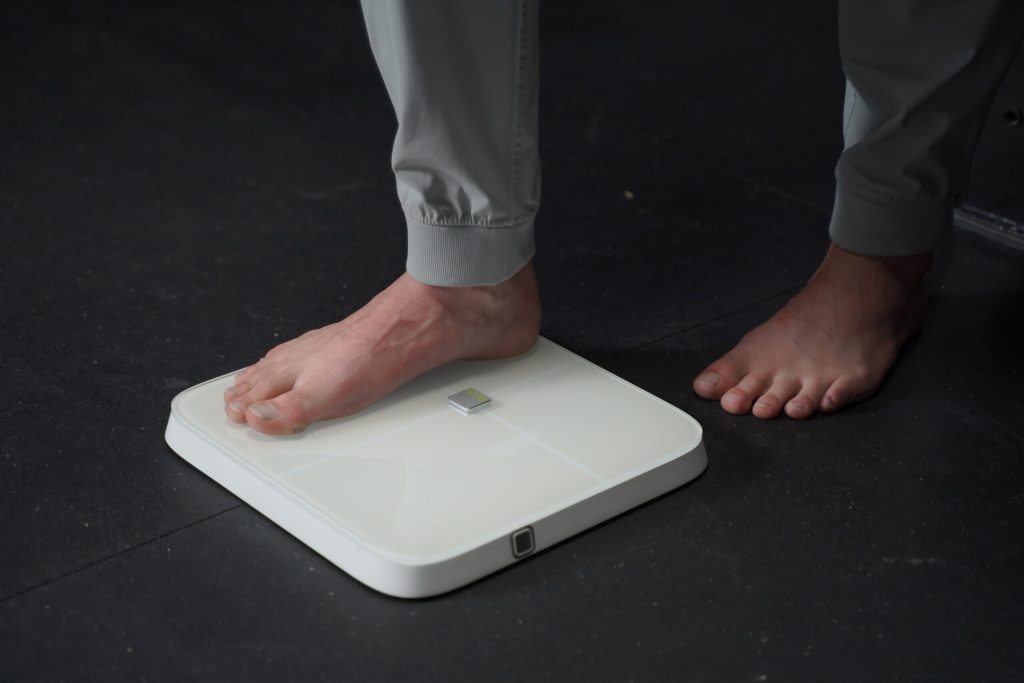Introduction
In today’s fast-paced world, where work demands, social commitments, and personal ambitions often leave little room for self-care, maintaining a healthy lifestyle can be challenging. However, thanks to the advent of wearable devices and smart health tools, achieving better health and improving overall life quality has become more accessible and manageable. These innovations not only offer convenience but also empower individuals to take control of their health and wellness by providing real-time data, actionable insights, and personalized feedback.
From fitness trackers to smartwatches, sleep monitors to heart rate monitors, these devices are revolutionizing how we track and manage our physical and mental well-being. This article explores how wearable technology and smart health tools can help us lead healthier, more balanced lives.
1. The Evolution of Wearable Technology and Smart Health Tools
Wearable technology has evolved significantly over the past decade, with early models primarily focused on fitness tracking. Today, these devices are more advanced, offering a wide range of functionalities designed to improve various aspects of our health and lifestyle.
1.1 Wearables: A Brief History
- First-Generation Wearables: Early wearables like pedometers and basic fitness trackers only counted steps and measured calories burned, helping users track their physical activity.
- Smartwatches and Fitness Trackers: Modern devices, such as the Apple Watch, Fitbit, and Garmin, go far beyond step counting. They track heart rate, monitor sleep patterns, measure oxygen levels, and even provide insights into mental health.
- Smart Health Tools: Devices like smart scales, connected thermometers, smart water bottles, and advanced ECG monitors are now an integral part of the growing digital health ecosystem, enabling users to monitor their health more comprehensively.
As technology has advanced, so has its ability to track an expanding array of health metrics, providing a more holistic view of an individual’s well-being.
2. Key Benefits of Wearable Devices and Smart Health Tools
Wearable devices and smart health tools offer several key advantages that can lead to a healthier, more fulfilling life. Below, we explore some of the main benefits.
2.1 Real-Time Health Monitoring and Early Detection
One of the primary advantages of wearable devices is their ability to provide real-time monitoring of various health parameters. With sensors that constantly track heart rate, activity levels, sleep patterns, and other metrics, these devices enable users to observe trends in their health and receive immediate feedback.
- Heart Rate Monitoring: Wearables like the Apple Watch and Fitbit continuously measure heart rate, allowing users to identify irregularities such as tachycardia (rapid heartbeat) or bradycardia (slow heartbeat), which may indicate underlying health issues like arrhythmia.
- Blood Oxygen Levels (SpO2): Certain smartwatches now offer the ability to measure blood oxygen levels, a critical metric for individuals with respiratory conditions like asthma or COVID-19.
How this improves life quality: Early detection of potential health issues through continuous monitoring can help users seek medical attention promptly, preventing complications and reducing long-term health risks. In some cases, this real-time feedback can lead to lifestyle changes that improve overall health.
2.2 Improved Physical Fitness and Motivation
Wearables like fitness trackers and smartwatches are designed to encourage physical activity, whether it’s through step-counting, heart rate monitoring during workouts, or tracking calories burned. These devices help users set and achieve fitness goals, making it easier to maintain an active lifestyle.
- Personalized Fitness Plans: Many wearables use data analytics to create tailored fitness routines based on an individual’s health data, progress, and goals. For example, a user might receive personalized recommendations to increase their step count, improve their sleep, or work on specific fitness areas like endurance or strength.
- Gamification and Social Sharing: Many devices come with gamification elements that allow users to compete with friends or participate in challenges, making fitness more engaging and motivating. Social features help create a sense of community and accountability, which can boost motivation.
How this improves life quality: Regular physical activity is crucial for maintaining good health, improving cardiovascular function, boosting mood, and preventing chronic diseases. By providing users with tangible data on their activity and progress, wearables help people stay motivated and committed to their fitness goals, improving both their physical health and overall well-being.
2.3 Better Sleep Tracking and Recovery
Quality sleep is one of the most important factors in maintaining overall health, yet many people struggle to get enough restorative sleep. Wearables equipped with sleep-tracking features can provide deep insights into sleep patterns, such as the duration of different sleep stages (light sleep, deep sleep, and REM sleep), interruptions, and overall sleep quality.
- Sleep Insights: Devices like the Oura Ring and Fitbit Sense offer detailed reports on sleep cycles, helping users understand how their habits impact the quality of their rest. Some devices even provide suggestions for improving sleep, such as adjusting bedtime routines or reducing screen time before sleep.
- Sleep Disorders Detection: In some cases, wearables can even detect signs of sleep disorders such as sleep apnea, alerting users to seek professional help before the condition worsens.
How this improves life quality: Good sleep is vital for cognitive function, mood regulation, immune health, and overall energy levels. By optimizing sleep, wearables can significantly enhance productivity, reduce stress, and improve emotional well-being.
2.4 Stress Management and Mental Health Monitoring
Mental health is just as important as physical health, and wearable devices are increasingly designed to help users manage stress and improve emotional well-being.
- Stress and Mood Tracking: Devices like the Fitbit Sense and Garmin Vivosmart 4 offer stress management features, which include tracking heart rate variability (HRV) as an indicator of stress levels. HRV is often used to assess the body’s ability to recover from stress and maintain a balanced autonomic nervous system.
- Breathing Exercises and Mindfulness: Many wearables include guided breathing exercises or meditation features, which encourage users to take short breaks throughout the day to relax and focus on their mental health.
How this improves life quality: Chronic stress is a major contributor to many health issues, including hypertension, anxiety, and depression. By providing users with real-time data on their stress levels and offering tools to manage stress, wearables can help reduce anxiety and promote emotional well-being, leading to an overall improvement in life quality.
2.5 Personalized Health Insights and Behavior Change
Wearables and smart health tools are not just about tracking data—they also provide personalized feedback that can lead to positive changes in behavior. With advanced algorithms and artificial intelligence (AI), these devices can process vast amounts of data to offer actionable insights tailored to an individual’s health and lifestyle.
- Health Goals and Recommendations: Based on the data collected, wearables can suggest specific goals, such as walking an additional 1,000 steps per day, improving sleep duration, or decreasing stress levels. They may even recommend healthier eating habits or hydration goals based on activity and overall well-being.
- Data-Driven Lifestyle Adjustments: Many wearables sync with mobile apps, where users can track progress, analyze data trends, and receive feedback on how to improve their lifestyle. This constant feedback loop can motivate users to make positive, lasting changes.
How this improves life quality: Personalized health recommendations based on real-time data allow users to make informed decisions that can enhance their health, leading to long-term improvements in quality of life.

3. Challenges and Considerations of Wearable Devices and Smart Health Tools
While wearables and smart health tools offer many benefits, there are also challenges and considerations that users should keep in mind.
3.1 Data Privacy and Security
As wearables and smart devices collect vast amounts of personal health data, privacy concerns have become a significant issue. Users should be aware of how their data is stored, shared, and protected. Companies must adhere to strict data protection standards to ensure the security and confidentiality of user information.
3.2 Accuracy of Data
The accuracy of health metrics provided by wearables can vary between devices. While these tools offer valuable insights, they should not be relied upon as the sole basis for medical decisions. It is important to consult healthcare professionals for a comprehensive diagnosis and treatment plan.
3.3 Over-Reliance on Technology
While wearables can be powerful tools for health management, there is a risk of becoming overly reliant on technology. It’s important to remember that technology should complement, not replace, traditional medical care. A balanced approach to health, including regular check-ups and consultations with healthcare professionals, remains essential.
4. Conclusion: Achieving Better Quality of Life Through Wearables and Smart Health Tools
Wearable devices and smart health tools have undoubtedly transformed the way we approach health and well-being. By offering real-time data, personalized feedback, and actionable insights, these devices empower individuals to make informed decisions and take proactive steps toward a healthier lifestyle. From monitoring physical fitness and sleep quality to managing stress and mental health, wearables have the potential to improve various aspects of our lives.
While challenges such as data privacy and device accuracy remain, the continued evolution of wearable technology holds great promise for enhancing quality of life. As more people adopt these tools, we are likely to see a more health-conscious, empowered society that takes greater responsibility for its well-being. With the right approach, wearables and smart health tools can help us all lead healthier, happier, and more balanced lives.










































